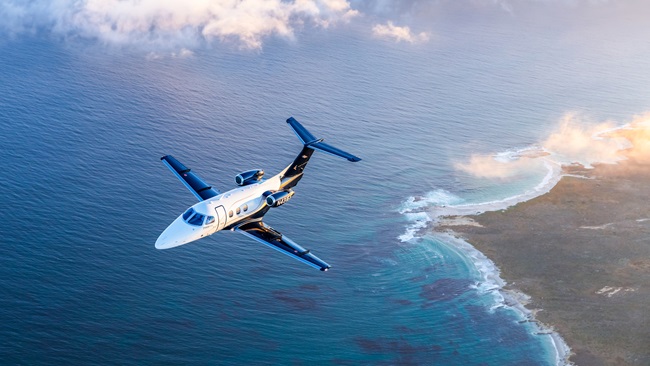Solar Impulse pilot encourages bizav segment to challenge assumptions
Flying the Solar Impulse 2 around the world with no fuel, no engine noise, and the sun as the only source of power, pilot Bertrand Piccard said he felt part of the future.

“It was like science fiction,” he said. “It was like being in the future. But then I realized all of this was being done with today’s technology. The rest of the world was in the past.”
Piccard led a pioneering team that circumnavigated the globe in the solar-powered, four-engine Solar Impulse 2 in 2015 and 2016. He also was the first to fly a hot air balloon around the world on a 20-day, nonstop journey. And it was during his record-setting balloon flight that he came up with the idea for an aircraft that could fly perpetually under its own power.
That global balloon flight began with 8,000 pounds of fuel and ended with just 80.
“I realized the sky isn’t the limit,” he said. “Fuel is the limit.”
He proposed a radical new airplane that could fly for days or weeks at a time. It required a wingspan similar to a jumbo jet, could weigh no more than a family car, and had the power output of a scooter. The airplane’s carbon-fiber structure had to be 10 times lighter than that of a high-performance glider, and aviation experts met Piccard’s proposals with scorn and ridicule.
“We had to find someone who did not know (what we were asking) was impossible,” he said.
The Solar Impulse team settled on a Swiss shipbuilder whose previous designs had won the Americas Cup race and who had never worked in aviation—characteristics that, in retrospect, shouldn’t have been a surprise.
“The people who made the best candles did not invent the light bulb,” he said. “We had to go outside the system.”
Piccard said business leaders must be explorers open to new ideas and willing to challenge conformity. Progress doesn’t come in straight lines, he said, and our current knowledge base is incomplete.
“What we know today is not enough,” he said.
Piccard said he lives by principles he learned in long-distance ballooning.
“Ballooning is a philosophy of life,” he said. “You’re a prisoner of the wind. You can swear, shout, pray, cry—and it doesn’t matter. But if you change your altitude, you can go a different direction.”
Climbing higher requires dropping ballast. Technological leaps require questioning beliefs and original thinking.
“We have to drop our certitudes, dogmas, and assumptions,” he said. “Then all the possible altitudes and directions are open to us.”
The first gliders were made from cloth and wood, materials that were available in Egypt 5,000 years ago. Leonardo da Vinci designed machines that were theoretically capable of flight during the Renaissance. But human flight didn’t take place until hundreds of years later because “Leonardo knew he would have been … tortured, and burned by the church if he tried.”
The Wright brothers’ early airplanes were widely regarded as “useless toys” at the dawn of powered flight in 1903, Piccard said, and electric aircraft are regarded with similar skepticism today—even though electric motors are far more energy-efficient than combustion engines.
Piccard said Solar Impulse was an achievement in clean energy, and he said environmental protection, profitability, and advancements in transportation aren’t mutually exclusive. The change starts by challenging assumptions and accepting risk.
“Drop ballast, change altitude, and take a better direction,” he said.



